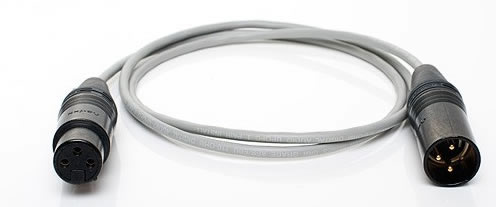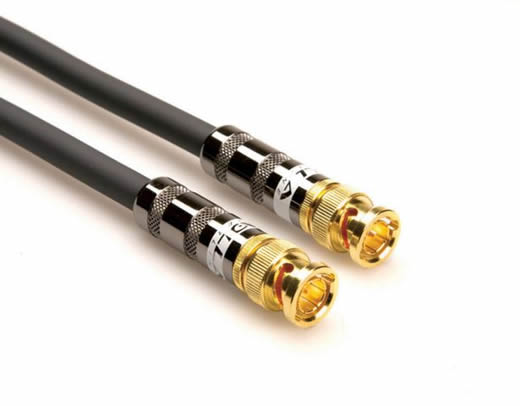SPDIF or AES/EBU
AES/EBU is the standard in the pro-world to connect audio devices digital.
It was developed by the Audio Engineering Society (AES) and the European Broadcasting Union (EBU) and first published in 1985 and also known as AES3.
It requires a balanced and screened (shielded) cable with nominal characteristic impedance of 110 Ω at frequencies from 0.1 to 128 times the maximum frame rate.
SPDIF is derived from this standard and intended for consumer use.

Not only the cable needs to be 110 Ω but to avoid reflections, the termination should be 110 Ω as well.
This is where the XLR termination totally fails.
That’s why some recommend to use AES3id instead.
AES3id is SPDIF but terminated with true 75 Ohm BNC connectors.
A bit more about digital cables.
The fundamental data format etc. between AES/EBU and SPDIF are identical. ASE/EBU has one preamble bit set different and has different usage of subcode, which means jack for the audio part of the data.
So AES is fundamentally subject to precisely the same jitter problems as SPDIF, except, with most SPDIF sources subcode is "mostly empty" so less jitter is generated.
The key differences are:
1) AES/EBU uses XLR connectors which are even less "nominal impedance" than RCA (read worse).
2) AES/EBU uses ten times the signal level of SPDIF, meaning it can tolerate more loss in long cables and if a receiver circuit has been optimised for AES/EBU it will work better as SPDIF will be at the lower limits (too much noise).
3) IMNSHO a competently implemented RCA SPDIF output will reliably outperform AES/EBU, a competently implemented BNC will do even better and it is actually the new AES standard as AES3id. Equally, competent SPDIF/AES3id inputs will be better or equal to anything that AES/EBU can do.
To add a AES/EBU output - get a XLR chassis punch, make a hole, fit an XLR socket, add a simple electronic circuit with output transformer (well, the principle is simple) to adopt the signal levels.
My PERSONAL preference is to use a very high speed, high drive modern SMD XXXX74 Reclocker chip (they are ok for > 500MHz and have very defined and low output impedance), feed it the SPDIF Signal and the actual master clock and to reclock the date and take the two opposite polarity outputs to make a 10V PP signal with very low source impedance.
Then add the right transformer and DC blocking and on the OUTPUT of your transformer add the so-called "Pad" to match the impedance. Done right, this works very well. So well I actually drive SPDIF/RCA SPDIF outs the same way in some products.
However, unless in your DAC the designer made a great job of AES/EBU and either forgot to fit SPDIF or ball'sed it up bigger than Cameron and the new EU treaty, it is PROBABLY not worse the hassle and probably sorting out SPDIF will be cheaper easier and better in the end.
(as usual, IMNSO, YMMV etc. et al taken as read)


